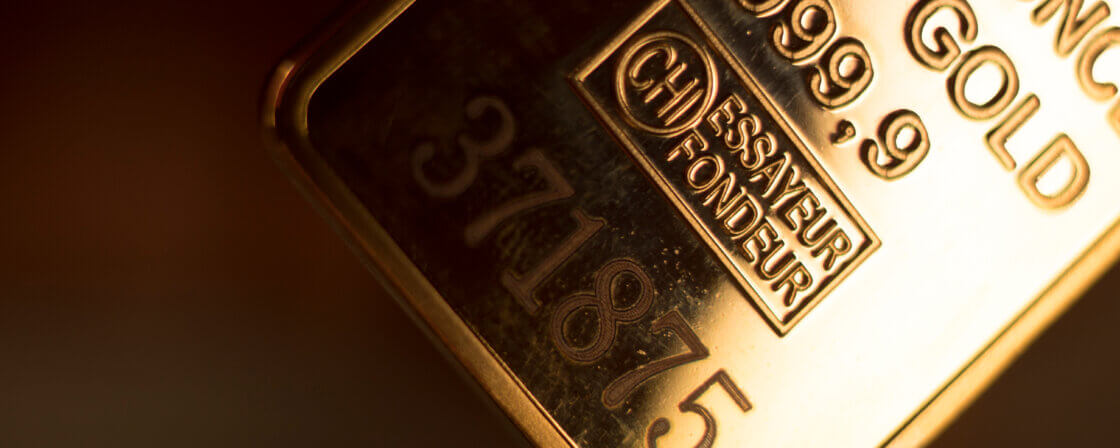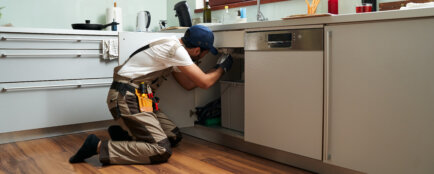Why (and when) reach for precious metals?
Why use gold and silver investments? Precious metals are a historical store of value. Unlike paper currencies, they can’t be “printed” in bulk and so are better able to withstand inflation. In addition, gold and silver have a low correlation with stocks and bonds, reducing overall portfolio risk. Traditionally, an allocation of 5-15% of savings is recommended.
In practice, gold is particularly sought after in times of uncertainty (recession, high inflation, military conflicts), while silver also responds to industrial demand (photovoltaics, batteries). Gold has a special privilege in the EU – if it meets the legal purity, you do not pay VAT on it. Compared to silver, you start with lower costs and the investment is more profitable right from the start.
Gold or silver, which is better? There is no universal answer. More conservative investors tend to gravitate towards gold, while silver offers the potential for higher returns, but at the cost of greater price fluctuations.
In what form can gold be purchased?
Physical bullion and coins
Wondering how to buy investment gold? Ingots (1g – 1kg) and refinery bars (12.5kg) are the most common options. Choose products with international LBMA Good Delivery certification and hallmarking (min. purity 995/1000). Buy from licensed dealers or banks.
One of the main advantages of physical investment gold is that you are holding a real asset that is not tied to any counterparty – unlike stocks or bonds, gold cannot ‘fail in your hand’.
On the other hand, there are practical drawbacks to consider, such as the need for safe storage and the relatively high spread, the difference between the buying and selling price, which is usually between 3% and 8%.
ETFs, ETCs and certificates
If you don’t want to hide gold bars at home or deal with vaults, you can invest in gold simply through exchange-traded funds(ETFs). These work in a similar way to ordinary shares – you buy a share in a fund that holds real gold safely stored in vaults (e.g. funds called GLD or IAU). You never physically hold the gold, but the price of your investment replicates the price of gold on the market.
Entry amounts are not staggering, you just need to buy one “share” of the fund, which can cost around $40 to $180 (or around CZK 1,000 to 4,000). Annual fund management fees are low, usually around 0.15% to 0.40% of the value of the investment. It is a convenient and affordable way to participate in the price of gold without the hassle of physically holding it.
Miners’ shares and commodity funds
Shares in companies such as Newmont Corporation or Barrick Gold are another avenue. These stocks tend to have a higher beta to the price of the metal, meaning that they deliver excess returns on the upside, but fall faster on the downside. Funds like the VanEck Gold Miners ETF (GDX) spread the risk among dozens of miners.
Are you solving a similar problem?
Need legal help with gold and silver investments?
Our legal experts will advise you on how to buy, store and sell precious metals correctly without complications and with respect to tax obligations. Gain security and safety when investing.
More information
- When you order, you know what you will get and how much it will cost.
- We handle everything online or in person at one of our 6 offices.
- We handle 8 out of 10 requests within 2 working days.
- We have specialists for every field of law.
In what form can silver be purchased?
Physical investment silver
As with gold, you can buy silver bullion (999/1000 purity) or American Silver Eagle coins. Where to buy silver at spot price? Order larger volumes from foundries or specialist dealers who offer a smaller markup. The downside is the 21% VAT you have to pay when buying in the EU.
Exchange-traded products
Do you want to invest in silver but don’t want to hide bars at home? Then you may be interested in exchange-traded products such as ETFs or ETCs – funds that replicate the price of silver. For example, the SLV or PowerShares Physical Silver fund tracks the current price of silver on the market, so you can see how your investment is performing without having to worry about physical storage. Annual management costs tend to be relatively low, usually between 0.20% and 0.50% of the value of the investment. But beware of so-called leveraged products (e.g. ETNs with “accelerated” gains or losses) – these are more for experienced investors and can be very risky for beginners.
How to get started – first purchase step by step
- Set a goal: do you want to protect your savings for the long term or speculate on short-term movements? Choose gold (defensive) or silver (dynamic) accordingly.
- Open an account with a broker/bank or find a brick-and-mortar dealer. Check that they have a CNB license and CAFT membership.
- Compare spreads and fees. For bullion, watch the premium over spot; for ETFs, the TER.
- Choose an appropriate purchase size. For regular savings, choose 1-20 g bullion, larger investors 100 g+.
- Place your order and keep your proof of purchase safely.
You can also always contact an experienced financial advisor who is familiar with the world of investing in gold and other commodities to advise you on how to best value your funds.
Where to shop safely in the Czech Republic
If you want to buy gold or silver, be careful who you shop with. Reliable sellers include large banks such as ČSOB or Komerční banka, well-known refiners (e.g. Argor Heraeus) or verified dealers such as Aurum or Zlaté Rezervy. You can also order silver online – reputable e-shops often allow personal collection in a safe room, so you can be sure of safety.
Before you pay, check three basic things: whether the company has a valid ID number and a licence from the Czech National Bank, what other customers say about it, and whether it has a clear price list with the difference between the buying and selling price clearly stated (the so-called spread and margin). This is the only way to avoid unpleasant surprises.
The Hallmarking Act guards authenticity
When you buy gold or silver, you want to make sure it is genuine. That’s why there’s a hallmarking law that requires every piece of precious metal jewellery or ingot to be marked with an official hallmark. This protects the ordinary buyer from counterfeits.
What to look out for when buying? Look for the hallmark – for gold it’s the head of a swan, for silver it’s the head of a rabbit. Ask for a certificate of authenticity and the serial number of the bar – this is like a birth certificate for your gold. For larger bars (over 500 grams), a certificate of hallmarking is also common, although this is no longer directly required by law for such quantities.
What are the other costs?
The difference between the purchase and sale price (the spread) is the main cost of the physical metal. For ingots up to 10 g it can be 8-12%, while for kilo bars it drops to 3%. With ETFs you pay an annual fee (Total Expense Ratio). You also have to take into account the bank transfer or storage fee (0.1 – 0.3% per year for vault storage).
How are gold and silver taxed?
Investment gold has one big tax advantage – you pay no VAT when you buy it. And if you sell it after three years, you don’t even have to tax the profit. Only if you sell it before three years, you will pay income tax of 15% on the gain (applies to individuals).
It’s differentwith silver – you already pay 21% VAT when you buy it. But as with gold, if you sell it after three years, you don’t have to pay tax on the profit from the sale. But if you do it before then, you will have to pay tax on the profit again.
If you invest through ETFs (exchange-traded funds), the same tax rules apply as for other securities: if you hold them for at least three years, the gain is tax-free. If not, you need to declare it on your tax return, which is due by 31 March the following year.
One more note for entrepreneurs: if you buy gold or silver as a company or self-employed person, slightly different rules apply – the metal is recorded as stock and you deal with taxes under the Income Tax Act.
Where to store precious metals?
Once you own investment gold or silver, it’s time to figure out where to put it, because hiding bullion under your mattress really isn’t the ideal solution. Here are three main options:
1.Home safe: If you want to keep your precious metals at home, get a good quality safe. It should be at least EN 1143-1 Class III certified and firmly anchored into the floor. Expect an investment of around CZK 10,000. The advantage? It’s always close at hand. Disadvantage? The liability is up to you, so be sure to get theft or fire insurance too.
2. Bank lockbox: This is a safer option where you store your gold in a safe deposit box at the bank. A small box will cost you between £1,500 and £5,000 a year. The advantage is that it is already insured up to CZK 500,000. It is an ideal solution for smaller volumes of metals.
3.Specialised storage abroad: if you are planning larger investments, you can use professional storage in Malta or Switzerland, for example. The annual fee is around 0.15% of the value of the metal stored. The advantage is that if you decide to sell the metal, you often only need to give instructions and do not have to physically transport it anywhere.
What about ETFs? There, the fund’s custodian (e.g. HSBC or JPMorgan) takes care of the security, and your insurance is included in the fee. So you don’t have to worry about storage at all.
Summary
Gold and silver are the traditional hedge against inflation and currency uncertainty – gold is more stable and suitable for conservative investors, silver has more return potential but also a more volatile price due to industrial demand. In the EU, gold is sold VAT-free if the conditions are met, whereas with silver you pay 21% extra. Physical metals are most commonly purchased as bullion (1 g – 1 kg) or coins, with gold having a purity of at least 995/1000 and LBMA certification. Buy from banks (e.g. CSOB, KB), licensed dealers (Aurum, Zlaté Rezervy) or refiners (Argor Heraeus). When buying, always check the hallmark, certificate of authenticity, ID number and dealer’s license. Alternatives are ETFs or ETC funds (e.g. GLD, SLV) that hold physical metals for you, with annual costs of up to 0.5%. For mining stocks (e.g., Newmont, Barrick Gold), expect higher returns but also higher risk. The main cost is the spread – up to 12% for small bars, around 3% for kilos. Gold is exempt from income tax after 3 years of holding; if you sell earlier, you are taxed on the gain at 15%. For ETFs, the same time test applies. Safe storage is provided by a home safe (from CZK 10,000), a bank safe deposit box (CZK 1,500-5,000 per year) or a specialised warehouse abroad (e.g. in Switzerland, for about 0.15% per year). Insurance against theft and the elements is essential.
This article is informative and does not constitute an investment recommendation.
Frequently Asked Questions
Do I have to report the purchase of investment gold to the tax office?
No. No purchase or holding of investment gold is reported. Tax liability only arises on sale if you sell before 3 years of holding and a profit is made.
How quickly can I sell physical gold or silver if I need cash?
Standard dealers pay out the money within 24-48 hours of delivery of the ingot. For banks, settlement can take 2-3 business days. ETFs and other exchange-traded form are sold immediately during exchange trading hours.
Is it better to buy small ingots or large bricks?
Smaller weights (1-20 g) carry a higher premium but can be sold off gradually. Larger bricks (100 g, 1 kg) have the lowest spread, but less flexibility for partial sales. Combine the two options according to your planned amount and liquidity.
Is it worth buying silver despite the 21% VAT?
Yes, if you believe in long-term price growth and have a horizon of 5+ years. The higher volatility of silver can “beat” VAT, especially when buying larger volumes at a lower premium.
What happens if the gold ETF goes bust?
The fund’s assets are recorded separately with a custodian (e.g. HSBC). In the event of a trustee failure, the fund is liquidated by the custodian and shareholders are paid the sale value of the metal, so the shares are not part of the trustee’s bankruptcy estate.




